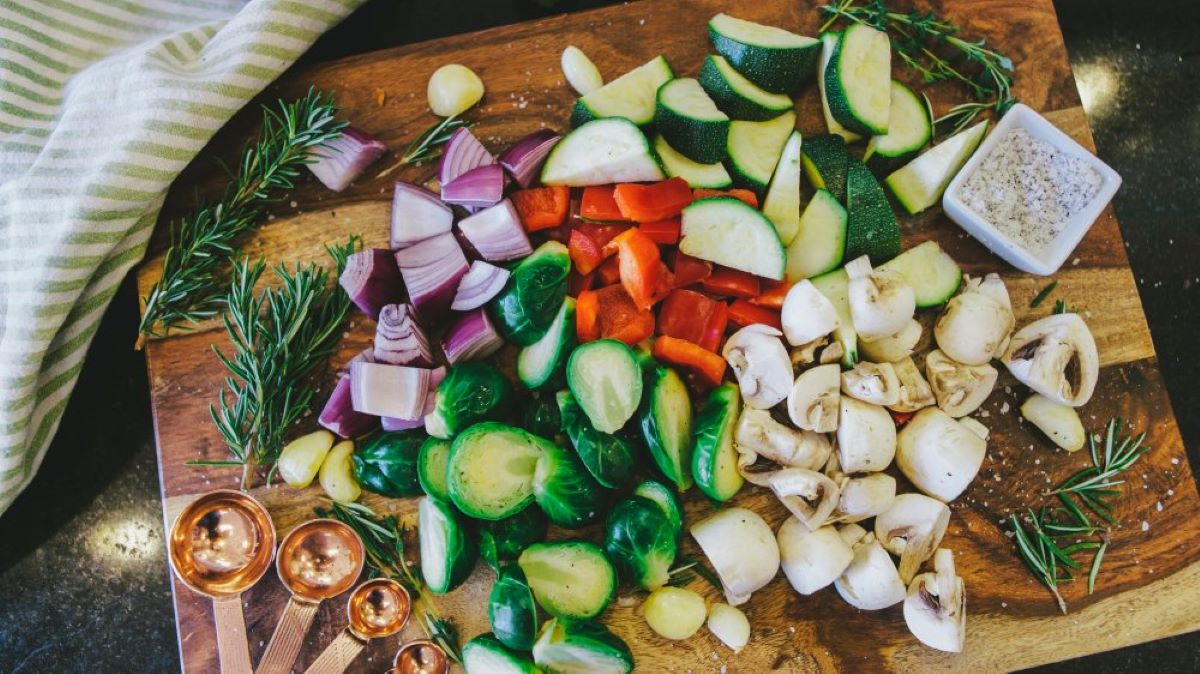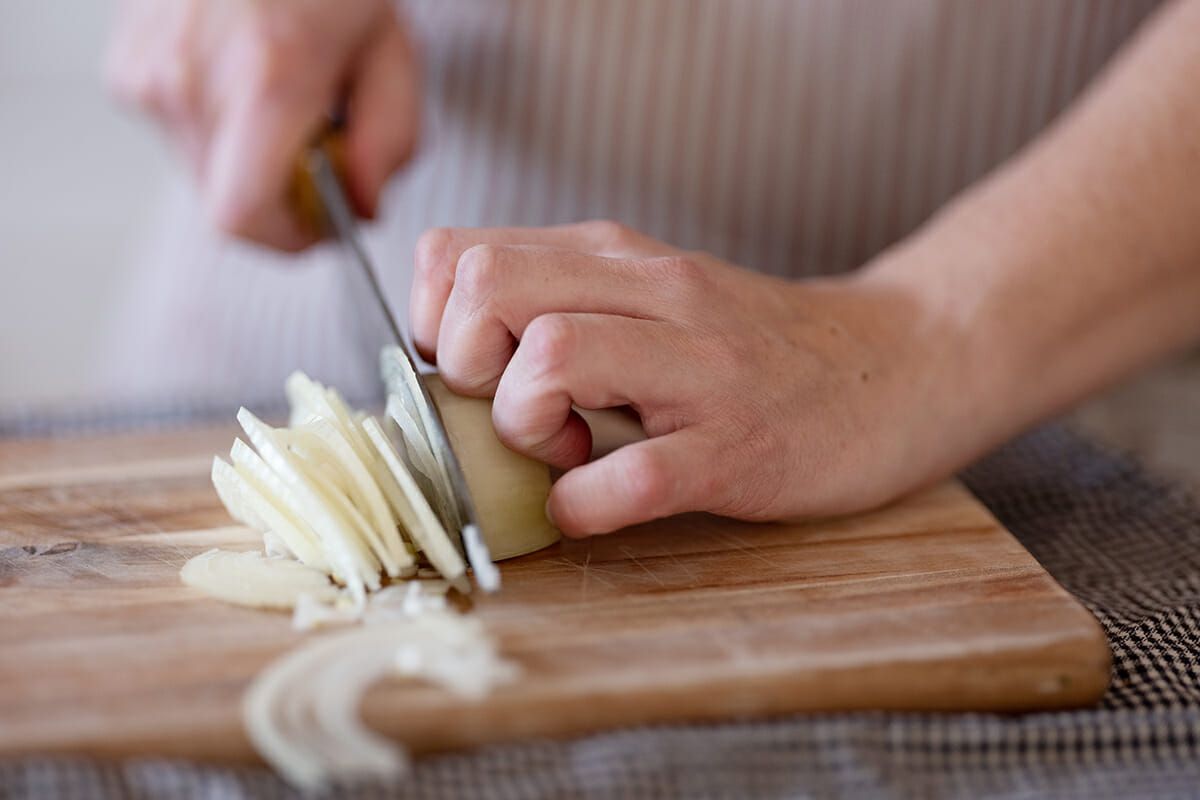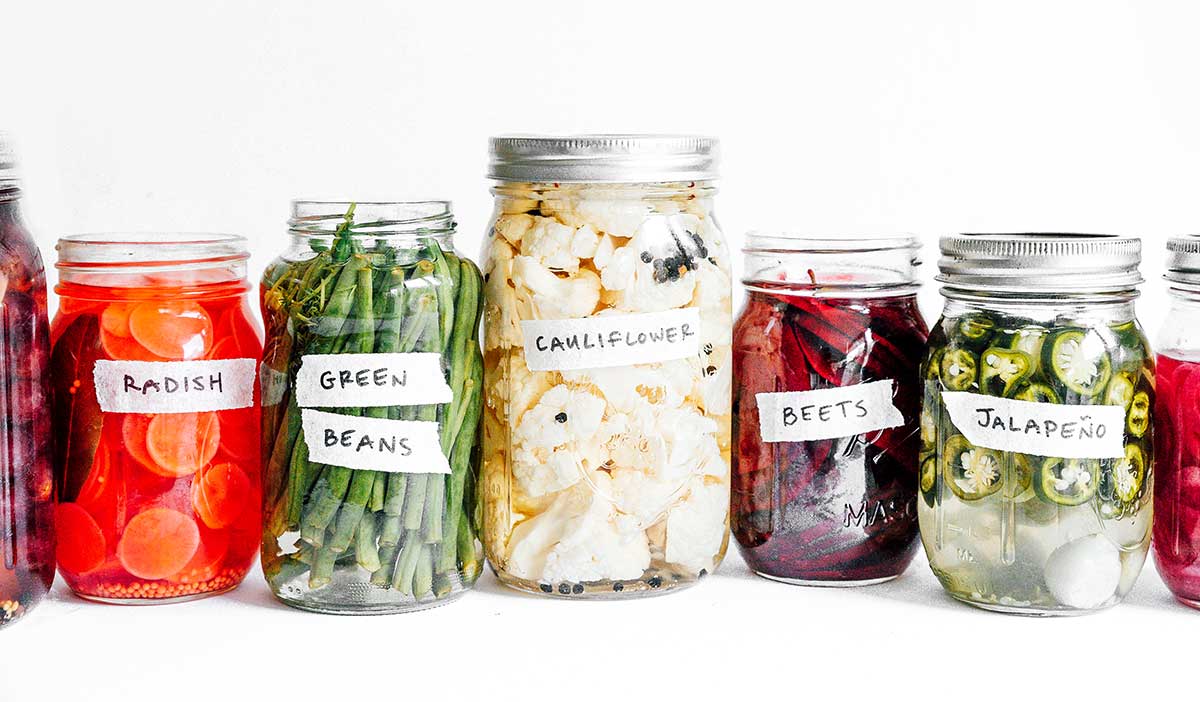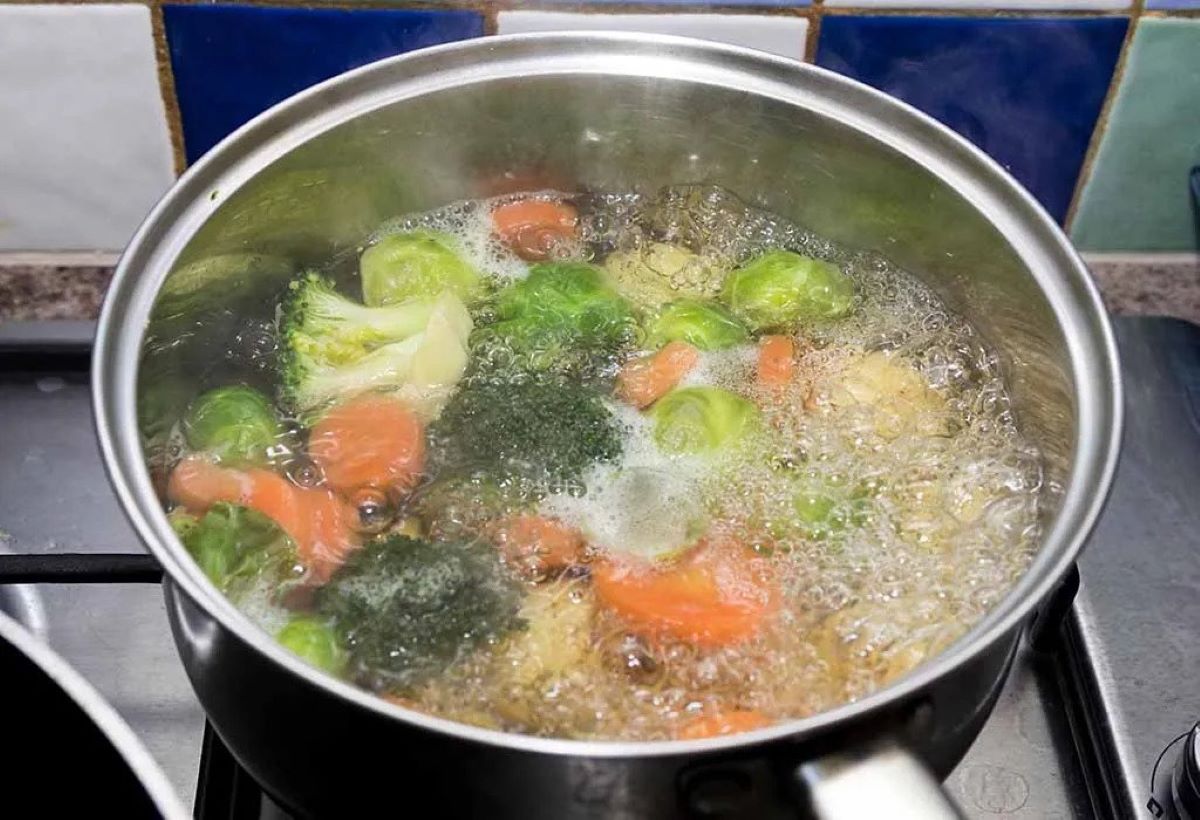Home>Gardening News and Trends>Latest News>How To Reheat Roasted Vegetables
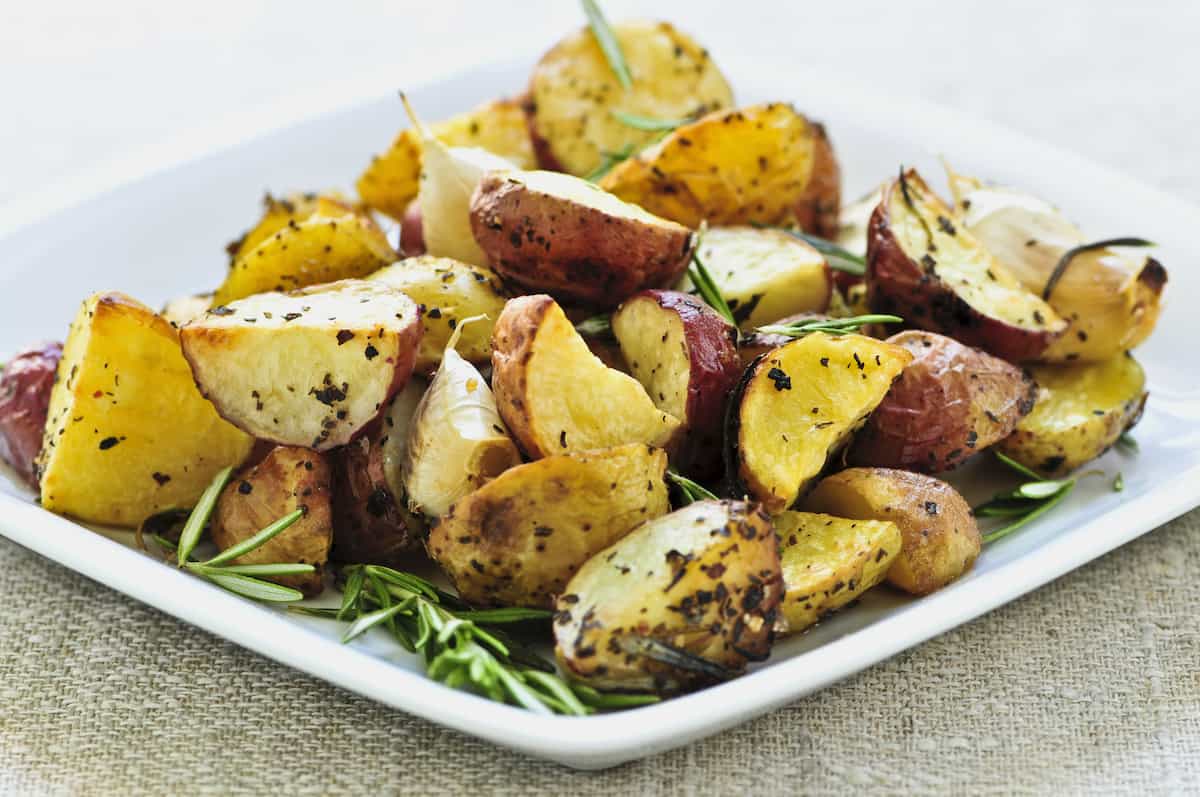

Latest News
How To Reheat Roasted Vegetables
Modified: January 22, 2024
Looking for the latest news on how to reheat roasted vegetables? Discover easy methods and practical tips for enjoying reheated veggies at their best!
(Many of the links in this article redirect to a specific reviewed product. Your purchase of these products through affiliate links helps to generate commission for Chicagolandgardening.com, at no extra cost. Learn more)
Table of Contents
Introduction
Reheating roasted vegetables is a simple and convenient way to enjoy the delicious flavors and textures of this versatile dish. Whether you have some leftover roasted vegetables from last night’s dinner or you want to prep a quick and nutritious meal, knowing how to properly reheat them can make all the difference.
Roasted vegetables are a popular side dish that can add a burst of color and taste to any meal. They are not only packed with vitamins, minerals, and fiber but also offer a unique smoky and caramelized flavor that is hard to resist. However, reheating roasted vegetables can be a bit tricky, as improper techniques can result in soggy or overcooked veggies.
The key to successfully reheating roasted vegetables lies in the method you choose and the attention you pay to details. In this article, we will explore the best methods for reheating roasted vegetables and provide you with valuable tips to ensure the best results.
Whether you roasted your vegetables in the oven, on the stovetop, or in the microwave, you can easily revive them to their original deliciousness. By following the correct reheating techniques, you can preserve the crispiness and flavor of the vegetables, making them taste just as good as when they were freshly roasted.
So, if you’re ready to learn how to reheat roasted vegetables like a pro, let’s dive in and discover the best methods and tips for achieving mouthwatering results!
Why Reheating Roasted Vegetables?
Reheating roasted vegetables offers several benefits that make it worth the effort. Here are a few reasons why you should consider reheating your leftover roasted vegetables:
- Reducing Food Waste: Reheating roasted vegetables is a fantastic way to reduce food waste. Instead of throwing away leftover vegetables, you can repurpose them into a delicious meal or side dish.
- Convenience: Reheating roasted vegetables provides you with a quick and convenient meal option. With a few simple steps, you can have a nutritious dish ready in no time.
- Preserving Nutritional Value: Roasted vegetables are known for their nutritional benefits, including a high content of vitamins, minerals, and fiber. By reheating them properly, you can help retain their nutritional value and reap the health benefits.
- Enhanced Flavor: Reheating roasted vegetables can actually enhance their flavor. The reheating process allows the flavors to meld together, intensifying the taste and making them even more delicious.
Additionally, reheating roasted vegetables gives you the opportunity to experiment with different seasonings and flavors. You can add a sprinkle of your favorite herbs or spices, a drizzle of olive oil, or a squeeze of lemon juice to elevate the taste and create a unique culinary experience.
While reheating roasted vegetables offers numerous advantages, it’s important to keep in mind that not all reheating methods yield the same results. Improper techniques can lead to soggy or unevenly heated vegetables, compromising their texture and taste.
Now that you understand the reasons why reheating roasted vegetables is beneficial, let’s dive into the next section to explore the common mistakes you should avoid when reheating this delectable dish.
Common Mistakes to Avoid
When reheating roasted vegetables, it’s important to be mindful of certain mistakes that can negatively impact the quality and taste of the dish. By avoiding these common pitfalls, you can ensure that your reheated vegetables turn out perfectly every time. Here are some mistakes to watch out for:
- Using the Wrong Reheating Method: Not all reheating methods are suitable for roasted vegetables. Using the wrong method can result in uneven heating or mushy vegetables. It’s important to choose the appropriate reheating method based on the type of vegetables and your desired outcome.
- Reheating for Too Long: Overheating roasted vegetables can lead to a loss of texture and flavor. It’s essential to reheat them just long enough to warm them through without overcooking them.
- Reheating Without Moisture: Roasted vegetables can dry out during the reheating process. Adding a bit of moisture, such as water, broth, or a drizzle of oil, can help prevent this and keep the veggies moist and flavorful.
- Reheating in a Closed Container: Reheating roasted vegetables in a closed container can create steam, which can make the vegetables soggy. It’s better to reheat them in an open container or on a baking sheet to allow for proper air circulation.
- Not Seasoning Properly: One common mistake is forgetting to season the reheated vegetables. Seasoning is crucial to enhance the flavor and bring out the best taste in the dish. Don’t be afraid to add a sprinkle of salt, pepper, or your favorite herbs and spices.
By avoiding these common mistakes, you can ensure that your reheated roasted vegetables retain their appealing texture, taste, and nutritional value. Now, let’s move on to the next section, where we will discuss different methods for reheating roasted vegetables.
Methods for Reheating Roasted Vegetables
There are several methods you can choose from when it comes to reheating roasted vegetables. The method you select will depend on your preferences, available equipment, and the desired outcome for your dish. Here are three common methods for reheating roasted vegetables:
- Oven Method: The oven method is ideal for reheating larger quantities of roasted vegetables. Preheat your oven to around 375°F (190°C), spread the vegetables in a single layer on a baking sheet, and heat them for 10-15 minutes. This method helps to retain the original texture and crispiness of the vegetables while evenly reheating them.
- Stovetop Method: The stovetop method is a quick and easy way to reheat roasted vegetables. Heat a skillet or frying pan over medium heat, add a small amount of oil or butter, and then add the vegetables. Stir-fry for a few minutes until the vegetables are heated through. This method is great for smaller portions and allows you to add extra seasonings or flavors during the reheating process.
- Microwave Method: The microwave method is the quickest option for reheating roasted vegetables. Place the vegetables in a microwave-safe dish, cover it with a microwave-safe lid or microwave-safe plastic wrap, and heat on medium power for 1-2 minutes, stirring halfway through. Be cautious not to overcook the vegetables, as they can become mushy. This method is best for smaller quantities and when you’re in a hurry.
Each of these methods has its advantages and can yield delicious results. Experiment with different methods to find the one that works best for you and produces the desired texture and flavor. Remember to monitor the reheating process closely to prevent overcooking and maintain the quality of the vegetables.
Now that we’ve explored the methods for reheating roasted vegetables, let’s move on to the next section where we will share some valuable tips for achieving the best results.
Oven Method
The oven method is a popular choice for reheating roasted vegetables, especially when you have larger quantities to reheat. This method helps to maintain the texture and crispiness of the vegetables while evenly reheating them. Here’s how to use the oven method:
- Preheat your oven to around 375°F (190°C).
- Spread the roasted vegetables out in a single layer on a baking sheet lined with parchment paper or aluminum foil. This ensures even heat distribution and helps prevent sticking.
- Drizzle a little oil or melted butter over the vegetables and season them with salt, pepper, or your preferred herbs and spices. This step enhances the flavor of the reheated vegetables.
- Place the baking sheet with the vegetables in the preheated oven and bake for 10-15 minutes, or until the vegetables are heated through. Keep an eye on them to avoid overcooking.
- Once reheated, remove the baking sheet from the oven and let the vegetables cool for a few minutes before serving.
The oven method is great for larger batches of roasted vegetables, as it allows for even reheating and helps retain their original texture. It’s important to ensure that the vegetables are spread out in a single layer on the baking sheet to avoid overcrowding, which can result in uneven heating.
Remember, the exact cooking time may vary depending on the type and size of the vegetables and the desired level of crispness. Keep an eye on the vegetables as they reheat to prevent them from becoming too soft or overcooked.
Now that you know how to use the oven method to reheat roasted vegetables, let’s explore another popular method: the stovetop method.
Stovetop Method
The stovetop method is a quick and convenient way to reheat roasted vegetables, making it a great option when you’re short on time or only have a small amount of vegetables to reheat. This method allows you to add extra seasonings or flavors during the reheating process. Here’s how to use the stovetop method:
- Heat a skillet or frying pan over medium heat.
- Add a small amount of oil or butter to the pan and let it melt.
- Add the roasted vegetables to the pan and spread them out evenly.
- Stir-fry the vegetables for a few minutes, tossing them occasionally, until they are heated through.
- Optional: Add additional seasonings, such as salt, pepper, garlic powder, or your favorite herbs and spices, to enhance the flavor of the vegetables.
- Once reheated, remove the pan from the heat and let the vegetables cool for a minute or two before serving.
Using the stovetop method to reheat roasted vegetables allows you to quickly warm them up while adding extra flavors. You can get creative with seasonings and experiment with different combinations to suit your taste preferences.
It’s important to keep an eye on the vegetables as you stir-fry them to avoid overcooking. Overcooking can result in soggy vegetables that lose their original texture and taste. Aim to reheat the vegetables just enough to warm them through without turning them mushy.
Now that you have learned the stovetop method for reheating roasted vegetables, let’s explore the microwave method as another quick and easy option.
Microwave Method
The microwave method is the quickest and most convenient way to reheat roasted vegetables, making it an ideal option when you’re short on time or only have a small quantity to reheat. While this method may not provide the same level of crispiness as the oven or stovetop methods, it is still an effective way to warm up your veggies. Here’s how to use the microwave method:
- Place the roasted vegetables in a microwave-safe dish.
- Cover the dish with a microwave-safe lid or microwave-safe plastic wrap, leaving a small vent for steam to escape.
- Heat the vegetables on medium power for 1-2 minutes, depending on the quantity and desired level of heat.
- Pause halfway through to give the vegetables a gentle stir, ensuring that they heat evenly.
- Once the vegetables are heated through, carefully remove the dish from the microwave.
- Allow the vegetables to cool for a minute before serving.
When using the microwave method, it’s important not to overcook the vegetables. The microwave can quickly turn them mushy if left heating for too long. Aim for a shorter interval of heating time and check for the desired level of warmth as you go.
While the microwave method may not provide the same level of texture and crispiness as other methods, it is still a convenient and time-saving option for reheating roasted vegetables. Consider topping the reheated vegetables with some grated cheese or a dollop of yogurt to add extra flavor and moisture.
Now that you have learned the microwave method for reheating roasted vegetables, let’s move on to the next section to discover some valuable tips for achieving the best results when reheating.
Tips for Best Results
To ensure the best results when reheating roasted vegetables, here are some valuable tips to keep in mind:
- Use the Right Container: When reheating in the oven or microwave, use microwave-safe or oven-safe containers. Avoid using plastic containers or wraps that may release harmful chemicals or melt.
- Moisten if Needed: If your roasted vegetables have dried out a bit, add a small amount of moisture when reheating. You can sprinkle a little water, broth, or a drizzle of oil over the vegetables before reheating to help retain their moisture.
- Avoid Overheating: Be cautious not to overheat the vegetables, as this can lead to a loss of texture and flavor. Reheat them just long enough to warm them through without making them mushy or overcooked.
- Stir and Toss: When reheating on the stove or in the oven, give the vegetables a gentle stir or toss them a couple of times during the process. This helps to ensure even heating and prevent any vegetables from getting too crispy or burnt.
- Season Again: Don’t forget to season the reheated vegetables. Add a sprinkle of salt, pepper, or your favorite herbs and spices to enhance the flavor and make them taste freshly prepared.
- Reheat in Small Batches: If you have a large quantity of roasted vegetables to reheat, it’s best to do it in smaller batches. This helps to ensure even heating and prevents overcrowding, which could result in unevenly heated vegetables.
- Monitor Closely: Keep a close eye on the reheating process, especially when using the oven or stove. Different vegetables may require different reheating times, so monitor them closely to avoid overcooking or undercooking.
By following these tips, you can achieve the best results when reheating roasted vegetables. Whether you’re looking to enjoy leftovers or repurpose roasted vegetables into a new dish, these tips will help you maintain their texture, flavor, and nutritional value.
Now that you have learned the best tips for reheating roasted vegetables, you’re ready to enjoy the deliciousness of your leftovers or create a new meal with ease!
Conclusion
Reheating roasted vegetables can breathe new life into leftovers and provide a convenient way to enjoy their delicious flavors. By choosing the right reheating method, avoiding common mistakes, and following valuable tips, you can successfully reheat roasted vegetables while maintaining their texture, taste, and nutritional value.
Whether you prefer using the oven, stovetop, or microwave, each method offers its own benefits and allows for customization in terms of seasoning and flavoring. The oven method is perfect for larger quantities, ensuring even heating and retaining the vegetables’ crispiness. The stovetop method offers speed and versatility, allowing you to add extra seasonings during reheating. The microwave method is the quickest and most convenient option for small portions.
While reheating roasted vegetables, it’s important to avoid common mistakes, such as using the wrong reheating method, overheating, or reheating in a closed container. Taking precautions like adding moisture, seasoning appropriately, reheating in smaller batches, and monitoring closely will help you achieve the best results and prevent disappointment.
With these tips and methods, you can confidently reheat roasted vegetables and enjoy a flavorful and nutritious dish. Whether you’re looking to reduce food waste, save time, or enjoy the taste of roasted vegetables once again, reheating provides a convenient solution.
So, the next time you have leftover roasted vegetables, don’t hesitate to reheat them using the methods and tips shared in this article. By doing so, you can elevate your meals and savor the deliciousness of these versatile and colorful veggies all over again!


